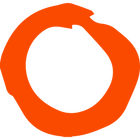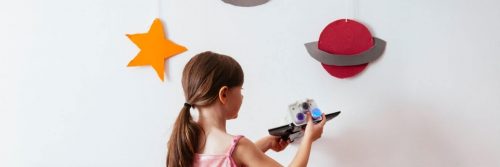Estimated reading time: 5 minutes
As you will know if you care for children, no two are the same. When we teach children the educational ‘basics’, it can be easy to adopt a ‘one-size-fits-all’ approach. What this typically involves is the teacher (you) directing the student (your child) by telling them what needs to be done and how they can do it, then asking them to undertake the task independently… all while sitting down and remaining quiet. This tends to go one of three ways: a) the child listens intently and fulfils the task without trouble, b) the child eventually completes the task after some difficulty and/or reluctance or c) the child becomes increasingly agitated by their lack of interest in or inability to meet the demands of the task and never completes it.
While there is a tendency to label the child who completes tasks with ease as ‘intelligent’, we often don’t consider that we have, perhaps subconsciously, catered to their innate strengths and set the groundwork for their success. Similarly, it may not cross our minds that the child who struggles or does not complete a task at all is not ‘unintelligent’, rather, is disinterested because our task showcases their weaknesses instead of their variety of strengths. In not looking at the ‘big picture’ as to why a child does not achieve the “normal” standard, it becomes easier for us to feel frustrated when information isn’t immediately absorbed and understood by them. It is critical during these times, to consider that this is not a sign of the child’s incapability, rather, a sign that we need to remain patient and work with their unmet needs. After all, how can we expect children to demonstrate patience if we do not demonstrate it ourselves?

It can also be tempting to avoid the problem altogether by setting less challenging tasks for our children. Although this desire to make things easier for them comes from a place of well-meaning, it only temporarily masks the issue and has the potential to result in them falling short of becoming the self-assured, self-confident children they are capable of being.
So what can we do to ensure our children are provided ample and equal opportunities for educational success? Harvard scholar and educational theorist, Howard Gardner, drawing from his own biological and cultural research, stresses the importance of first determining each child’s ‘profile of intelligence’. According to Gardner, there are nine different types of intelligence children can demonstrate:
- Linguistic: finding the right words to express what is meant
- Logical-mathematical: quantifying things, making hypotheses and proving them
- Spatial: visualising the world in 3D
- Bodily-kinesthetic: coordinating mind with body
- Musical: discerning sounds- their pitch, tone, rhythm and timbre
- Intrapersonal: knowing of self, what is felt and what is wanted
- Interpersonal: sensing people’s feelings and motives
- Naturalist: understanding living things and reading nature
- Existential: tackling questions of why we live and why we die

Every child has different aptitudes in each of these nine bits of intelligence, but all are required to some degree to be able to function within society. Typically, children will excel at one, or a few of this intelligence but it is impossible for anyone to be highly gifted across all areas. Their main area(s) of intelligence will then, in turn, determine how engaging (or un-engaging) they find tasks. It is worth noting though that while this intelligence is categorised separately, they rarely operate independently. Instead, they work in tandem with each other as children undertake particular activities. For example, the task of composing a song requires both linguistic and musical intelligence.
So what can you do to ensure you create engaging tasks that are adjusted to your child’s intelligence(s), while still keeping your sanity? Use multimedia- text, images, audio, video and animation. Rather than running around like a headless chicken planning several tasks to cover all bases, using multimedia allows for the development of several bits of intelligence at one time, all while keeping them entertained! If you aren’t sure of your child’s core intelligence(s), you will soon learn simply by observing how they react to the task.
If your child struggles with learning the alphabet, play a short movie and get them to ‘pick out’ all the words beginning with a particular letter; ask them to audio record a poem they have written that features only words that have a particular letter in them; or create a ‘musical statues’ game where they have to pose in a different position as they read out every letter of the alphabet in time to the music. There are many ways to ‘switch things up’ by your child’s main intelligence(s), but this does involve some creativity. Google and Pinterest are great sources of inspiration in this instance!

There is no denying that the three R’s of education (reading, writing and arithmetic) remain of vital significance, but children who lack in linguistic and logical-mathematical intelligence will struggle with the current educational system without additional support at home. In many instances, it is not what is being taught that children don’t understand- it’s how it’s taught.
So next time you feel like yelling “how do you still not understand this?” and “I don’t know what else to do!” and ripping out all your hair, remember: it’s not that your child is unintelligent, it’s that their intelligence has perhaps gone unnoticed or undervalued.
There is a wealth of skill and knowledge within your child just waiting to be tapped into, and once it is, they will be reminded of both their inherent potential and of your love and support for them. Not all children learn the same and not all hope is lost when a child doesn’t pick things up immediately. The sooner this is recognised and catered for, the more time there is to facilitate deeper understanding and the greater the opportunity for them to truly thrive.
To discover more about parenting and children, click here.








